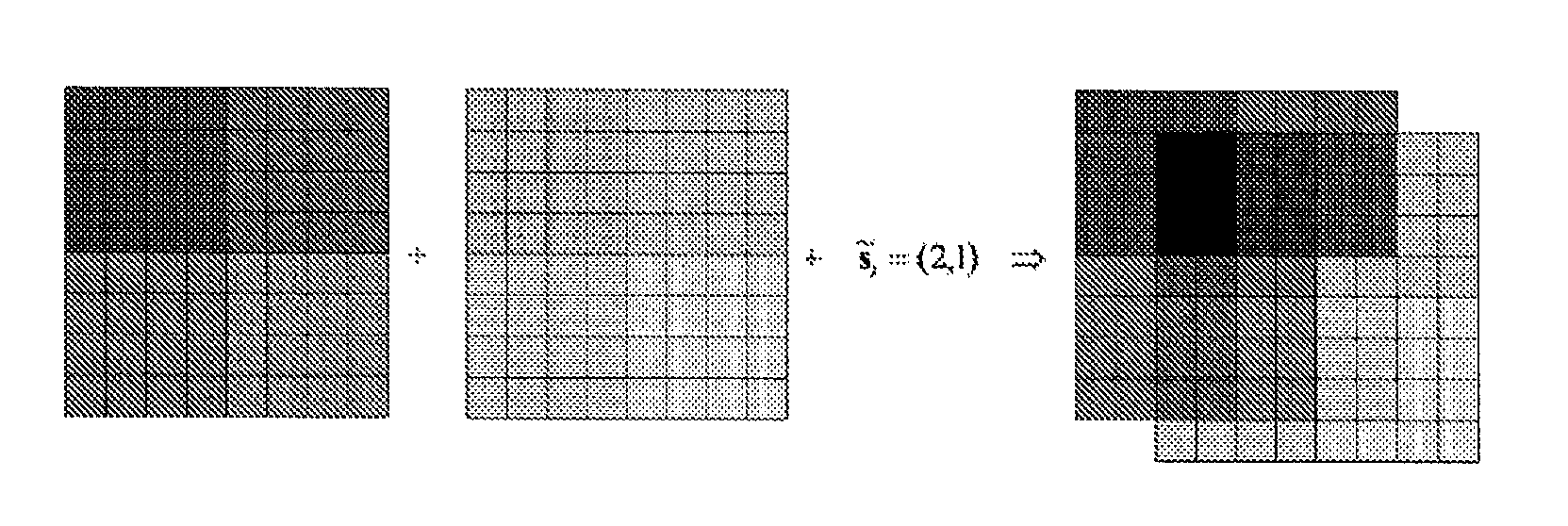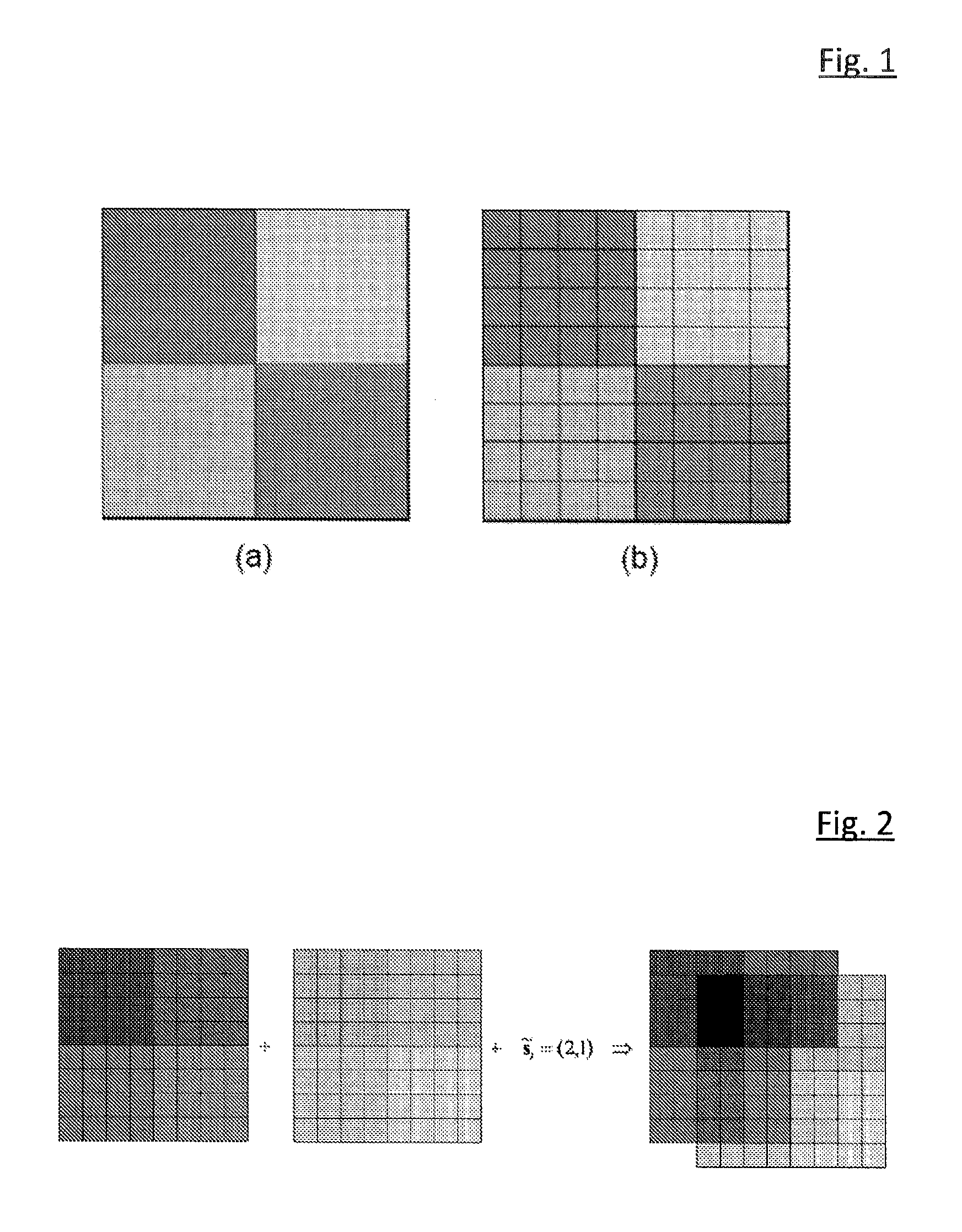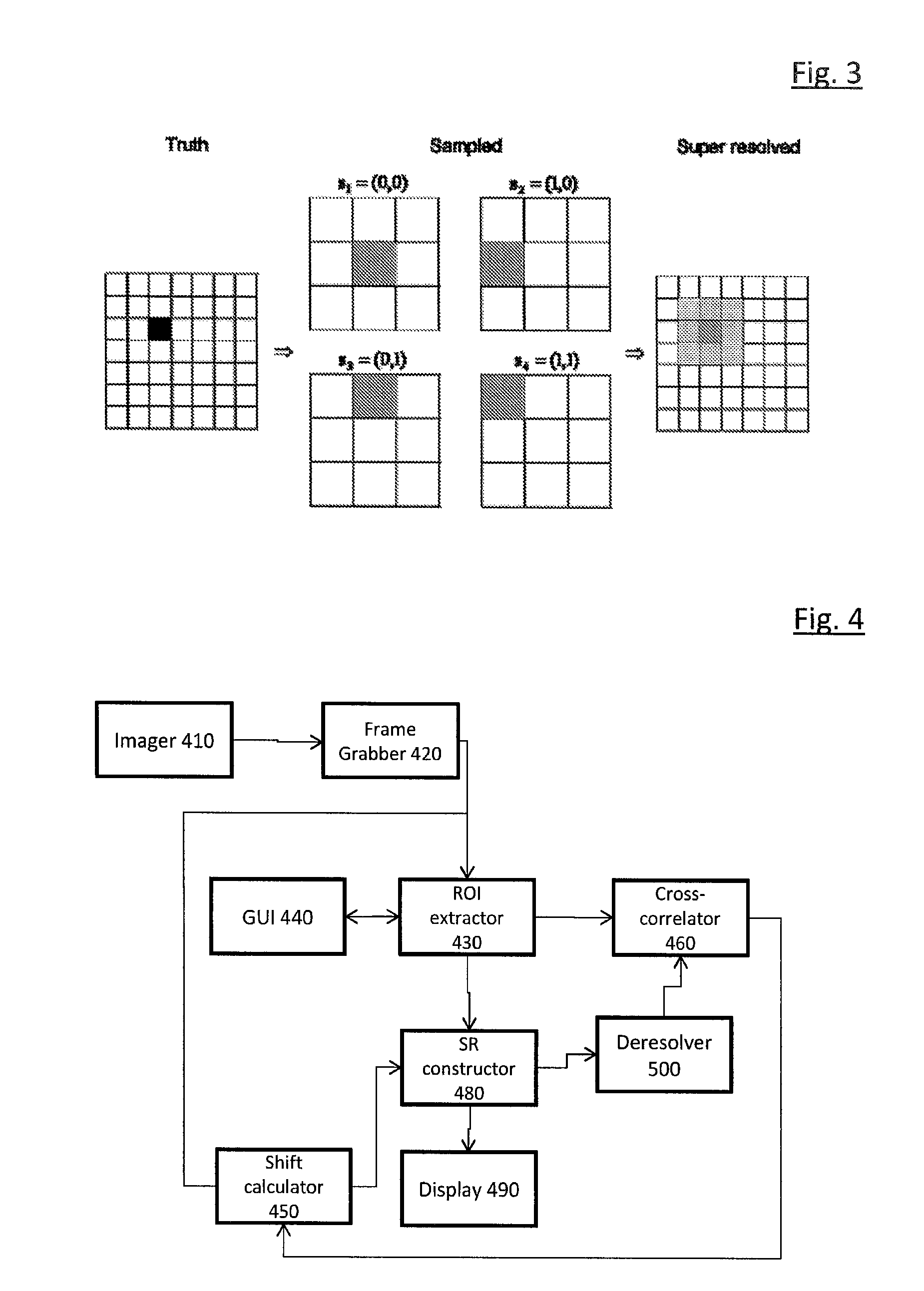Image processing
a technology of image processing and frame portion, applied in the field of image processing, can solve the problems of reducing the significant reducing the significant weight of previous frame portion, and achieve the effects of reducing the significant weight, increasing the significant weight, and fast decaying with tim
- Summary
- Abstract
- Description
- Claims
- Application Information
AI Technical Summary
Benefits of technology
Problems solved by technology
Method used
Image
Examples
Embodiment Construction
[0057]Super-resolution algorithms have been in the open literature for a number of years, but they are slow.
[0058]A straightforward, non-real-time implementation of super resolution takes as its input a stack of low-resolution images and provides as output a single higher-resolution image. To achieve that, three principal processing steps are carried out sequentially, namely registration, summation and deblurring.
[0059]In many applications, such as astronomy, in which only a single, still, image is required from a historical image stack, very computationally demanding algorithms have been developed, to generate the best possible super-resolved image. In contrast, in example embodiments of the invention, it is not the best possible super-resolved image that is sought, but rather an image that is ‘good enough’ and that can be constructed in the time available (e.g. milliseconds), on the hardware available (e.g. embedded processors).
[0060]In example embodiments of the present invention...
PUM
 Login to View More
Login to View More Abstract
Description
Claims
Application Information
 Login to View More
Login to View More - R&D
- Intellectual Property
- Life Sciences
- Materials
- Tech Scout
- Unparalleled Data Quality
- Higher Quality Content
- 60% Fewer Hallucinations
Browse by: Latest US Patents, China's latest patents, Technical Efficacy Thesaurus, Application Domain, Technology Topic, Popular Technical Reports.
© 2025 PatSnap. All rights reserved.Legal|Privacy policy|Modern Slavery Act Transparency Statement|Sitemap|About US| Contact US: help@patsnap.com



